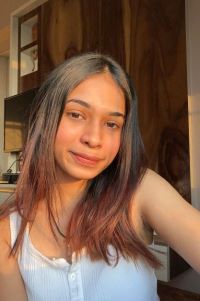How Will ChatGPT Change Education and Teaching?
Over the years, technology has changed schooling in countless ways. Although it has increased students’ and instructors’ access to resources, it has also increased disparities and interruptions in the classroom. Whether one likes it or not, technology in educational settings is likely to stay, and it keeps getting better. In 2022, ChatGPT was released to the general public by OpenAI, a firm that does research and development in the field of artificial intelligence.

Anybody with a gadget and internet connectivity can use ChatGPT for free, thereby rendering it widely accessible, especially for students most of which are online these days.
Also Read: What Is ChaosGPT: Can The AI Bot Destroy Humanity?
An artificial intelligence (AI) computer program called ChatGPT uses its intelligence to interpret and emulate natural human language in the responses it generates.
The AI in the program employs a transformer-based neural network with a sizable database to analyze the incoming data and produce a response. When a human user enters queries or orders into ChatGPT, the AI analyses the text and produces the response according to the neural network data.
As an AI language model, ChatGPT can offer several benefits to education and teaching. ChatGPT can help personalize the learning experience for each student.
By understanding a student’s learning style, strengths, and weaknesses, ChatGPT can create tailored learning experiences that cater to the individual needs of each student. ChatGPT can provide quick and easy access to information on any topic.
Students and teachers can ask questions and receive answers almost instantly, which can help facilitate learning and understanding. It can assist teachers by providing them with real-time feedback on student progress, suggesting appropriate learning resources, and answering students’ questions.
As a language model, ChatGPT can help students improve their writing and communication skills by suggesting vocabulary, grammar, and sentence structure. ChatGPT can also help teachers grade assignments more efficiently by providing automated feedback on student work, saving them time and allowing them to focus on other important aspects of teaching.
Overall, ChatGPT has the potential to revolutionize education and teaching by providing personalized learning, quick access to information, support for teachers, improved language skills, and efficient grading.
The chatbot from OpenAI has already been incorporated into educational technology businesses’ apps, such as Duolingo and Quizlet, which produces digital flashcards and practice exams used by half of the high school pupils in the US.
A fact sheet regarding ChatGPT’s possible influence in classrooms was also created by OpenAI in collaboration with educators. The business claims that when it created a free tool to identify text authored by a chatbot (although its reliability is limited), it also talked to educators.
Also Read: Win 11’s AI feature smart snap layout is out. Is it worth the hype?
The initial buzz surrounding ChatGPT was mostly centered on how effective it is at administering tests. In fact, this was a major selling point for OpenAI when it released GPT-4 in March, the most recent iteration of the big language model that powered the chatbot.
It excelled on the AP exams in a number of subjects, including macroeconomics, psychology, US history, macro-art history, and environmental science.

I am a law graduate from NLU Lucknow. I have a flair for creative writing and hence in my free time work as a freelance content writer.

